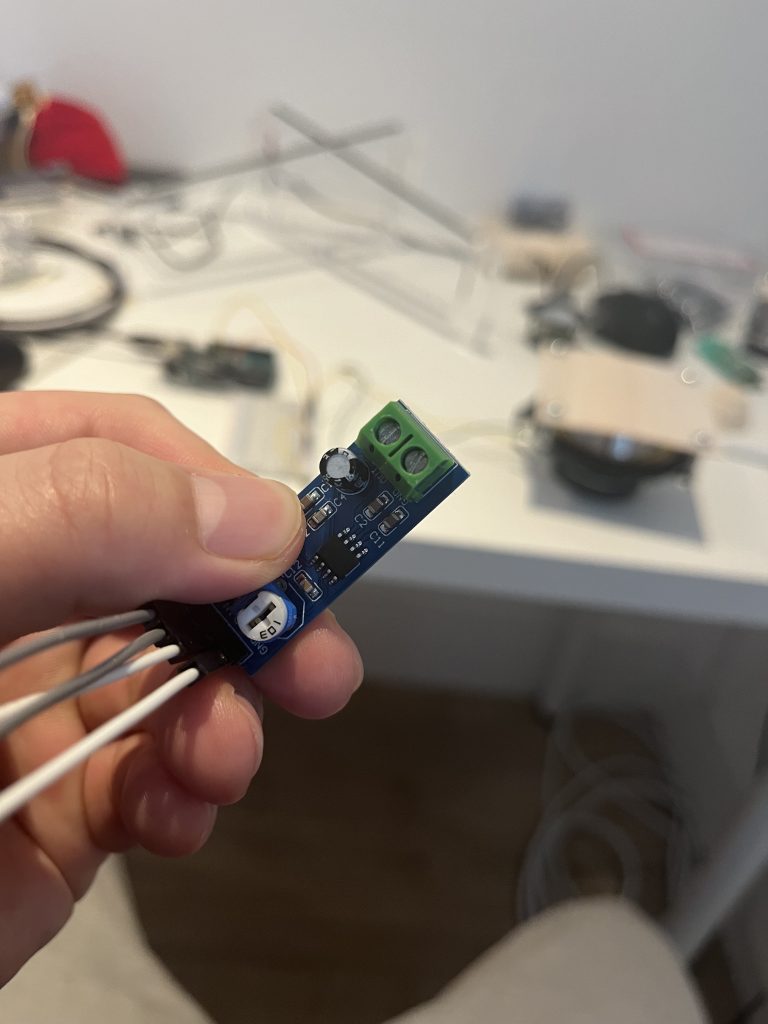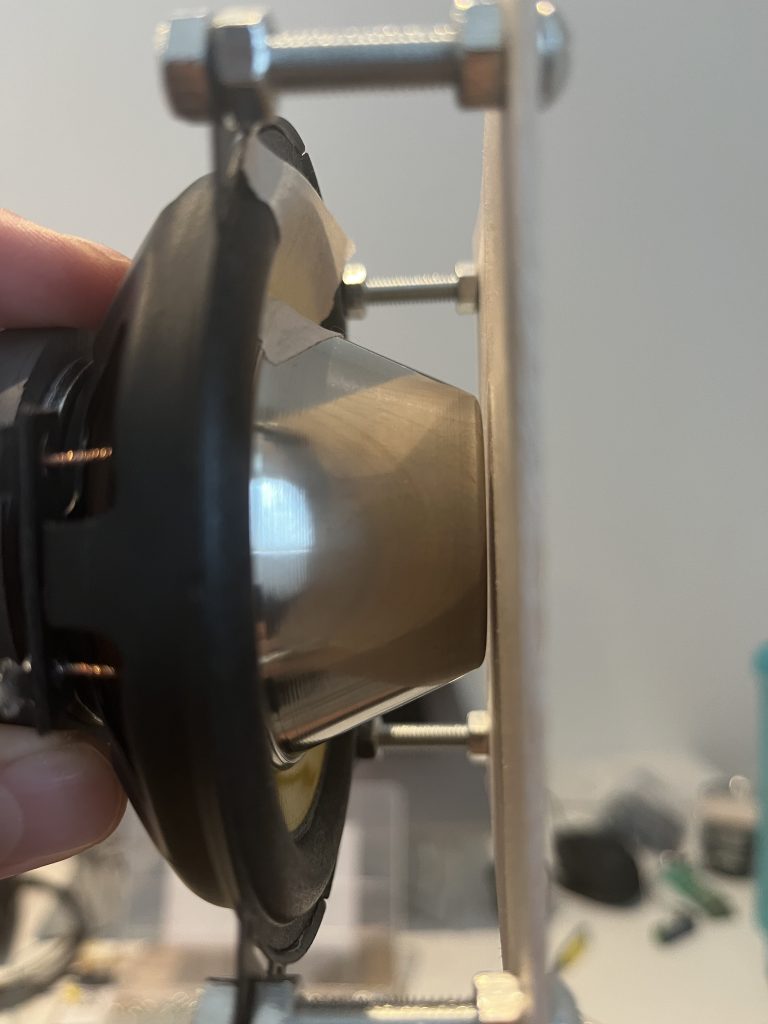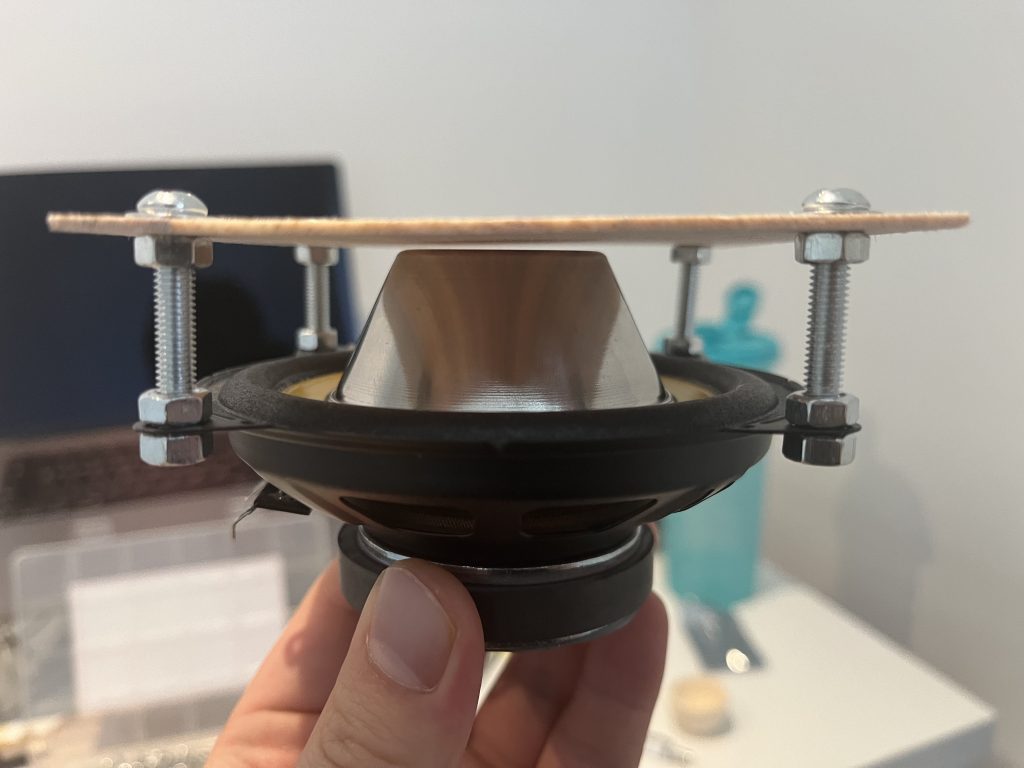Today I’m going to do an experiment with the arrival of steel plates, a large speaker, and jumper wires for an audio amplifier.
I purchased 10cm x 10cm sheets of steel in thicknesses of 0.8mm, 2mm and 3mm, with the intention of using the thickness of the sheets to create different sounds. The original plan was to use a power drill at 3D Workshop to drill holes in the plates and combine them with the speakers, but they were booked up for over a week, so I bought a power drill and will drill the holes myself tomorrow at home. For now, I tested the sound with my hands and a few objects. The thicker the thickness, the more resonant the sound, and the higher the pitch tended to be. Unfortunately, the sound wasn’t as good when it came into contact with the objects I had. I’ll have to experiment more with other objects and decide which ones to use.
The jumper wires I bought for the LM386 have arrived, but unfortunately I won’t be able to use the audio amplifier yet. In order to connect the audio amplifier to the speakers, you need to connect it to something called a terminal block, and the terminal block of the lm386 is a screw type, which means that you use a screwdriver to make a space and then connect the jumper wires to it. The problem is that the screwdriver I have is too big to turn the screw, so I ordered a smaller screwdriver and will experiment with it when it arrives.

There is also one more issue with the audio amplifier, the LM386 is an audio amplifier for low power speakers, so it may not work with my new speakers. I haven’t experimented with it yet, so I’m not sure, but I’ll try it with both of the speaker drivers I have and if it works well with the smaller speakers, I’ll probably end up using them.
Finally, the big speakers arrived. It’s about 10cm in diameter, about twice the size of the previous speaker, and the plate moves well. I couldn’t connect the iron plate to the speaker yet, so I cut a wooden plate to size and joined them together. I attached a small sauce bowl to the inside and experimented with two different pulses, one that emits a small pulse every hour, and one that I injected with 5 volts of power by hand.
The difficulty I encountered was the difficulty in controlling the distance between the wooden plate and the sauce bowl, even though the movement of the plate is greater than in previous speakers. It has to be fine-tuned, not too close and not too far away. The video below is a failed attempt to adjust the distance. What was disappointing was that I later adjusted the distance properly so that when the speaker was powered up, it bumped into the wood plate, but there was very little sound from the wood plate. If I get a steel plate in the future, I’ll have to experiment again with the steel plate.


Since I couldn’t get the distance right, I just tried pressing the wooden board against it. It wasn’t loud, but it sounded and felt similar to a heartbeat when I listened to it up close or touched it with my hand, which I think is partly due to the flexibility of wood. I’ll have to think about using this to my advantage.
For the next experiment, I think I should experiment with both the steel plate and the audio amplifier, and make a decision about which speaker to use, whether to use an audio amplifier or not. Also, even with the large speaker, the sound generated by the control through the Arduino barely moved the plate of the speaker, and the direct application of 5 volts only worked. If an audio amplifier would solve this, I would probably use an audio amplifier and control via the Arduino, and I have ordered a Relay Module to control the power in case the audio amplifier doesn’t work effectively. I will have to experiment with this as well.